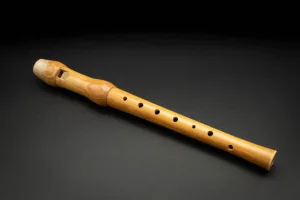Music is a universal language that has been enjoyed by people all over the world for centuries. Playing a musical instrument can be a fulfilling and rewarding experience, but for some people, learning to play an instrument can be daunting. Fortunately, many musical instruments are considered easy to learn and play, making them ideal for beginners. This article will explore the easiest instruments to play and the benefits of learning a musical instrument. Whether you’re looking to pick up a new hobby, de-stress after a long day, or explore your musical side, there’s sure to be an easy instrument out there that’s perfect for you.
 What Makes an Instrument Easy to Play?
What Makes an Instrument Easy to Play?
Several factors can make an instrument easier to play. Here are some of the main ones:
Size and Shape
Size and shape must be considered when making an instrument easy to play. Smaller instruments like the ukulele or the harmonica can be easier to handle and manipulate. In contrast, larger instruments such as the piano or the drums can pose challenges for beginners due to their size and complexity. It’s important to find an instrument that fits comfortably in your hands and feels natural to play to enjoy learning music truly.
Design
The design is as important as the player’s skill when playing an instrument. The ease or difficulty of playing an instrument can be greatly influenced by its number of keys or strings. With their uncomplicated designs, the recorder or the guitar can be simpler for beginners to learn than more complex instruments like the saxophone or the violin. However, not everyone wants an easy instrument to play. Some musicians are drawn to the challenge of pushing their skills to the limit with an instrument that is more difficult to play. Ultimately, it all comes down to personal preference and the dedication and commitment a person is willing to put into their craft.
Physical Demands
For anyone interested in learning how to play a musical instrument, understanding the physical demands of it is key. While some instruments may seem easy to pick up, others require a lot of physical effort and stamina. Take wind instruments, for example – mastering the flute or trumpet requires reading sheet music and controlling the breath needed to create sound. For beginners, this can be a real challenge. On the other hand, instruments like the bongos and tambourine require less physical effort and can be great options for those with physical limitations. Ultimately, what makes an instrument easy to play is subjective and depends on the individual player’s strengths and weaknesses.
Complexity
Instruments like the harmonica or the xylophone, with their simple structure and straightforward playing techniques, tend to be easier for beginners to master. On the other hand, instruments that require advanced music theory knowledge or more complex playing techniques can be more challenging to learn. Understanding what makes an instrument easy to play is crucial when starting a new musical journey. Whether you’re a seasoned musician looking to expand your repertoire or a beginner trying to find the right instrument for you, considering the complexity of an instrument can be a helpful place to start.
What are The Easiest Instruments to Play?
Several musical instruments are considered easy to play, making them ideal for beginners. Here are a few examples:
 Ukulele: This four-stringed instrument may resemble a guitar, but don’t let that fool you. Its unique, cheerful sound sets it apart, making it a treasured pop and folk music addition. You can start playing some of your favorite tunes with just a few basic chords in no time.
Ukulele: This four-stringed instrument may resemble a guitar, but don’t let that fool you. Its unique, cheerful sound sets it apart, making it a treasured pop and folk music addition. You can start playing some of your favorite tunes with just a few basic chords in no time.
 Harmonica: It is a small and uncomplicated instrument that musicians of all levels love. Its simplicity and size make it accessible to anyone without requiring virtuosity to produce sweet music. Furthermore, the straightforward structure of the harmonica makes it perfect for genres like blues, country, and folk, making it a popular choice for many musicians. Whether you are a beginner or an experienced player, it is never too late to enjoy playing the harmonica.
Harmonica: It is a small and uncomplicated instrument that musicians of all levels love. Its simplicity and size make it accessible to anyone without requiring virtuosity to produce sweet music. Furthermore, the straightforward structure of the harmonica makes it perfect for genres like blues, country, and folk, making it a popular choice for many musicians. Whether you are a beginner or an experienced player, it is never too late to enjoy playing the harmonica.
 Bongos: Bongos is a percussion instrument that anyone can play. Their simple structure consists of two drums of different sizes connected by a wooden or metal frame. With just a few basic techniques, you can easily produce various sounds. Whether you prefer Latin, jazz, or pop, bongos are perfect for creating rhythmic patterns and accents. They don’t require much formal training or music theory knowledge, so anyone can learn to play with practice. Bongos are an affordable option compared to other percussion instruments. It’s never been easier to explore the world of percussion without breaking the bank.
Bongos: Bongos is a percussion instrument that anyone can play. Their simple structure consists of two drums of different sizes connected by a wooden or metal frame. With just a few basic techniques, you can easily produce various sounds. Whether you prefer Latin, jazz, or pop, bongos are perfect for creating rhythmic patterns and accents. They don’t require much formal training or music theory knowledge, so anyone can learn to play with practice. Bongos are an affordable option compared to other percussion instruments. It’s never been easier to explore the world of percussion without breaking the bank.
 Xylophone: The xylophone is widely regarded as one of the easiest instruments to play. Its simple structure sets it apart from other percussion instruments. The xylophone is a series of wooden bars arranged by pitch, each bar clearly labeled by note. Basic music theory knowledge is required to play the xylophone effectively, specifically in understanding rhythm and timing. As a percussion instrument, the ability to read sheet music and play in time with a given tempo is essential. Once the basics are learned, the xylophone technique is relatively straightforward. Simply striking the bars with mallets produces a bright and unique sound. Players can quickly learn to play complex melodies and harmonies with consistent practice on this fun and accessible instrument.
Xylophone: The xylophone is widely regarded as one of the easiest instruments to play. Its simple structure sets it apart from other percussion instruments. The xylophone is a series of wooden bars arranged by pitch, each bar clearly labeled by note. Basic music theory knowledge is required to play the xylophone effectively, specifically in understanding rhythm and timing. As a percussion instrument, the ability to read sheet music and play in time with a given tempo is essential. Once the basics are learned, the xylophone technique is relatively straightforward. Simply striking the bars with mallets produces a bright and unique sound. Players can quickly learn to play complex melodies and harmonies with consistent practice on this fun and accessible instrument.
 Recorder: The recorder is an excellent starting point for anyone interested in learning a musical instrument. Its straightforward design, fingerings, and limited note range make it an accessible instrument for beginners. It is often incorporated into school curriculums, providing abundant learning materials, such as sheet music and tutorials, for both children and adults. The recorder is the perfect tool for building foundational knowledge in music theory and finger positioning. Developing these skills is crucial for any musician and can be applied to other instruments. It is also a cost-effective and portable option, making it an ideal choice for anyone who wants to learn an instrument without breaking the bank.
Recorder: The recorder is an excellent starting point for anyone interested in learning a musical instrument. Its straightforward design, fingerings, and limited note range make it an accessible instrument for beginners. It is often incorporated into school curriculums, providing abundant learning materials, such as sheet music and tutorials, for both children and adults. The recorder is the perfect tool for building foundational knowledge in music theory and finger positioning. Developing these skills is crucial for any musician and can be applied to other instruments. It is also a cost-effective and portable option, making it an ideal choice for anyone who wants to learn an instrument without breaking the bank.
In conclusion, finding your musical groove and exploring the easiest instruments can be a rewarding and fulfilling experience. Whether you choose the ukulele, harmonica, bongo, xylophone, recorder, or any other instrument, the key is to find an instrument that speaks to you and that you enjoy playing. You can develop your skills and enjoy creating music with practice, dedication, and patience. Learning an instrument can also have many benefits, such as improving cognitive function, reducing stress, and increasing self-esteem. So, why take the first step and explore the music world today? You never know. You may discover your new favorite hobby or even a lifelong passion.


